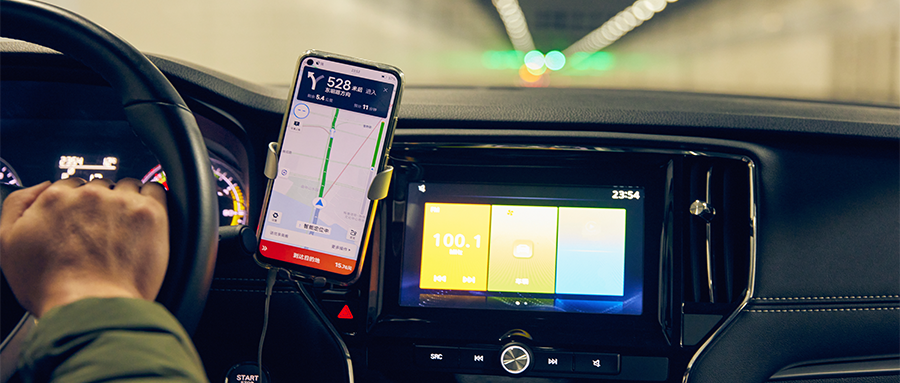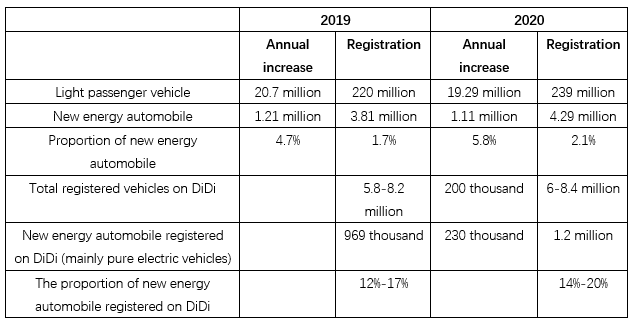

In the previous article “A ‘Nudge’ may trump the carrot-and-stick method: New ideas for electric vehicle popularization”, the author showed how behavioral economics can help quickly push the adoption of electric vehicles. From the perspective of total cost ownership (TCO), this article tries to explain why the proportion of new energy automobile in E-hailing cars is much higher than that in economy wide light passenger vehicles.
Differences in car-buying decisions: Rationality and “Bias”
By comparing the penetration rate of new energy automobile in the light passenger vehicle market and the proportion of new energy automobile on DiDi (China's largest car-hailing platform), we can see how different these two purchase decisions are made. The ownership of vehicles registered on the E-hailing service provider DiDi includes both DiDi itself and individual drivers. Regardless, the decision to buy a car is based on a cost-benefit evaluation, which is the difference between the total cost of the vehicle (mainly the sum of the cost of purchase, maintenance and fuel) and the total benefit (the benefit from providing E-hailing services) over the vehicle's life cycle. This is obviously different from the decision process of private car buyers who value the purchase cost. The decision of E-hailing buyers who prioritize the relatively low TCO of electric vehicles is the main reason behind the rapid growth of new energy automobile registrations on DiDi in recent years. In other words, the car-buying decision-making process of E-hailing could be considered as more rational than that of ordinary consumers, and there is less “bias” in cost.
The proportion of new energy automobile in E-hailing is increasing annually
The proportion of new energy automobile on DiDi is much higher than that in the national light passenger vehicle ownership, which indicates that taking TCO as the decision-making basis can bring about a faster popularization of electric vehicles.
As direct data cannot be found, the total number of registered vehicles on DiDi platform in Table 1 is estimated based on the following two sources: One is the legitimate E-hailing vehicle transport licenses and order compliance rate of E-hailing platforms (referring to the proportion of orders with compliant E-hailing driver's licenses and E-hailing vehicle transport licenses within total online E-hailing orders). According to the Ministry of Transport, the number of vehicle transport licenses issued by the government to provide E-hailing services had reached 1.418 million by September 30, 2021. [1] This is an increase of about 200,000 [2] over the 1.229 million in February 2021. Therefore, we assume that at the end of 2020, the number of compliant E-hailing vehicle transport licenses was approximately 1.2 million. According to the order compliance rate of the platform, the ratio of the number of compliant and non-compliant vehicles can be roughly estimated. Secondly, according to data released by the Ministry of Transport in July 2021, the order compliance rates of more than 200 ride-hailing platforms vary widely, ranging from 16 percent to 93 percent. DiDi's order compliance rate is relatively low. [3]
It is reasonable to assume that all compliant vehicles are registered in, and use the DiDi platform, assuming that DiDi's order compliance rate is about 20%. It is estimated that the number of non-compliant vehicles registered on DiDi is 4-6 times that of compliant vehicles. In 2020, the number of vehicles registered on DiDi have reached 6 million to 8.4 million, based on number of 1.2 million compliant E-hailing transportation licenses approved by the government. Here we assume that the total number of compliant and non-compliant vehicles registered on DiDi in 2019 is 5.8 million to 8.2 million, slightly lower than that in 2020.
Table 1: Registration ratio of new energy automobile on DiDi vs. penetration rate of new energy automobile in light passenger vehicle market

Source: E-hailing supervision platform of the Ministry of Transport; China Auto Industry Development Annual Report 2021
Conclusion
The development of "car-sharing" economy represented by E-hailing brings opportunities for decarbonization of road transportation. While meeting diverse travel needs, the E-hailing industry has also accelerated the market penetration of electric vehicles. If we can learn from the experience and reasons of the rapid increase in the proportion of new energy automobile in E-hailing, perhaps policymakers can better disclose TCO information of EVs and educate consumers of its low cost, thereby eliminating many consumer's cognitive "bias", to promote the popularization of EVs and the decarburization of road traffic faster.
Note:
[1] 网约车监管平台发布9月行业运行情况. 交通部,2021. Link: https://www.mot.gov.cn/jiaotongyaowen/202110/t20211020_3622398.html
[2] 网约车监管平台发布2月行业运行情况. Link:http://www.gov.cn/xinwen/2021-03/22/content_5594771.htm
[3] 网约车平台订单合规率不达两成。新加坡联合早报。Link: https://www.zaobao.com.sg/realtime/china/story20210710-1167363
Author:Zhao Ang
Translation: Chen Shikai
Proofread: Pan Yiren
This article is an original article of the Rock Environment and Energy Institute. Please contact us to obtain the appropriate authorization to reprint. For cooperation and authorization, please send an email to: liying@reei.org.cn
* This is the translation of an article in Chinese. Should there be any inconsistency between Chinese and English version, the Chinese version shall prevail.




